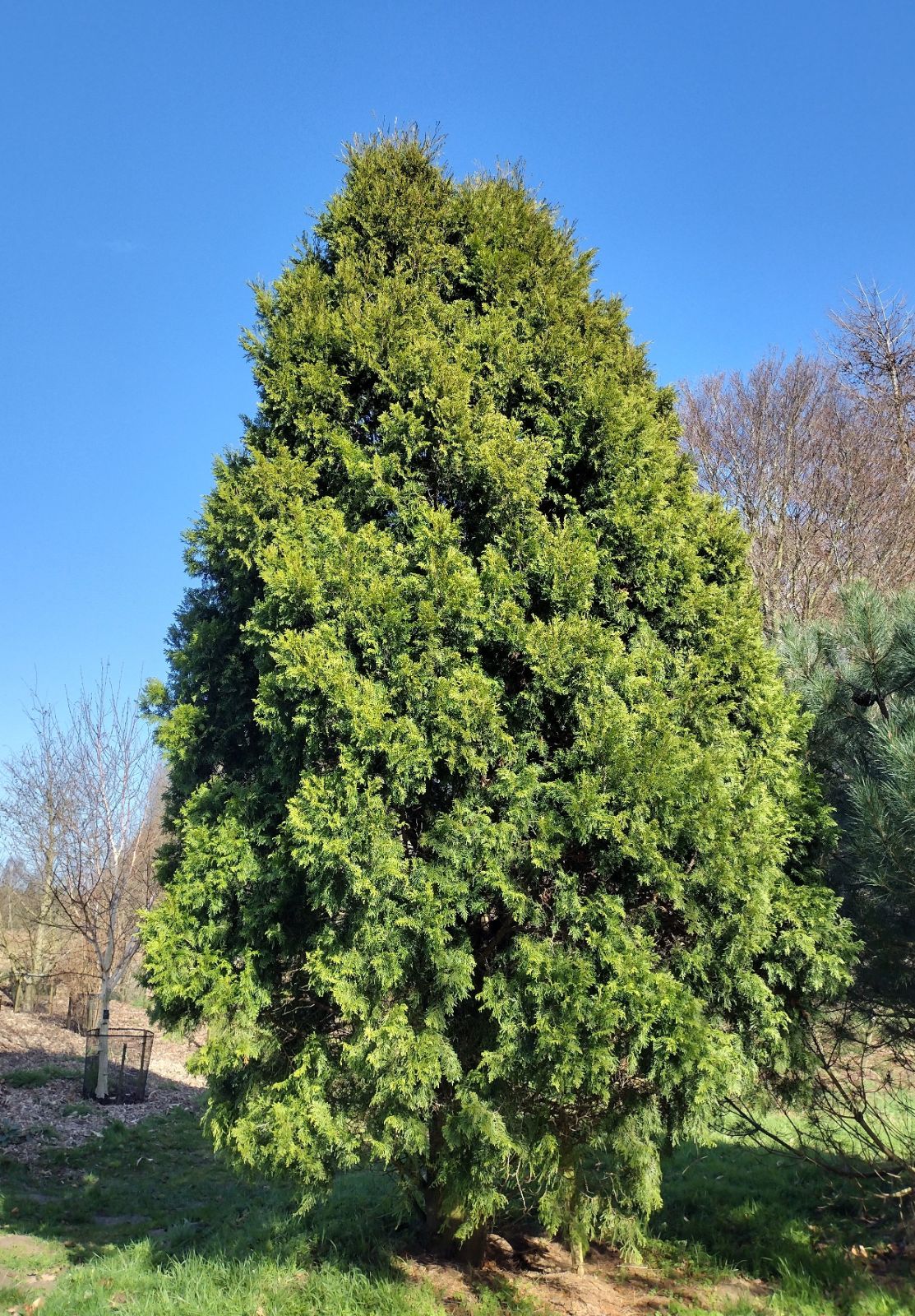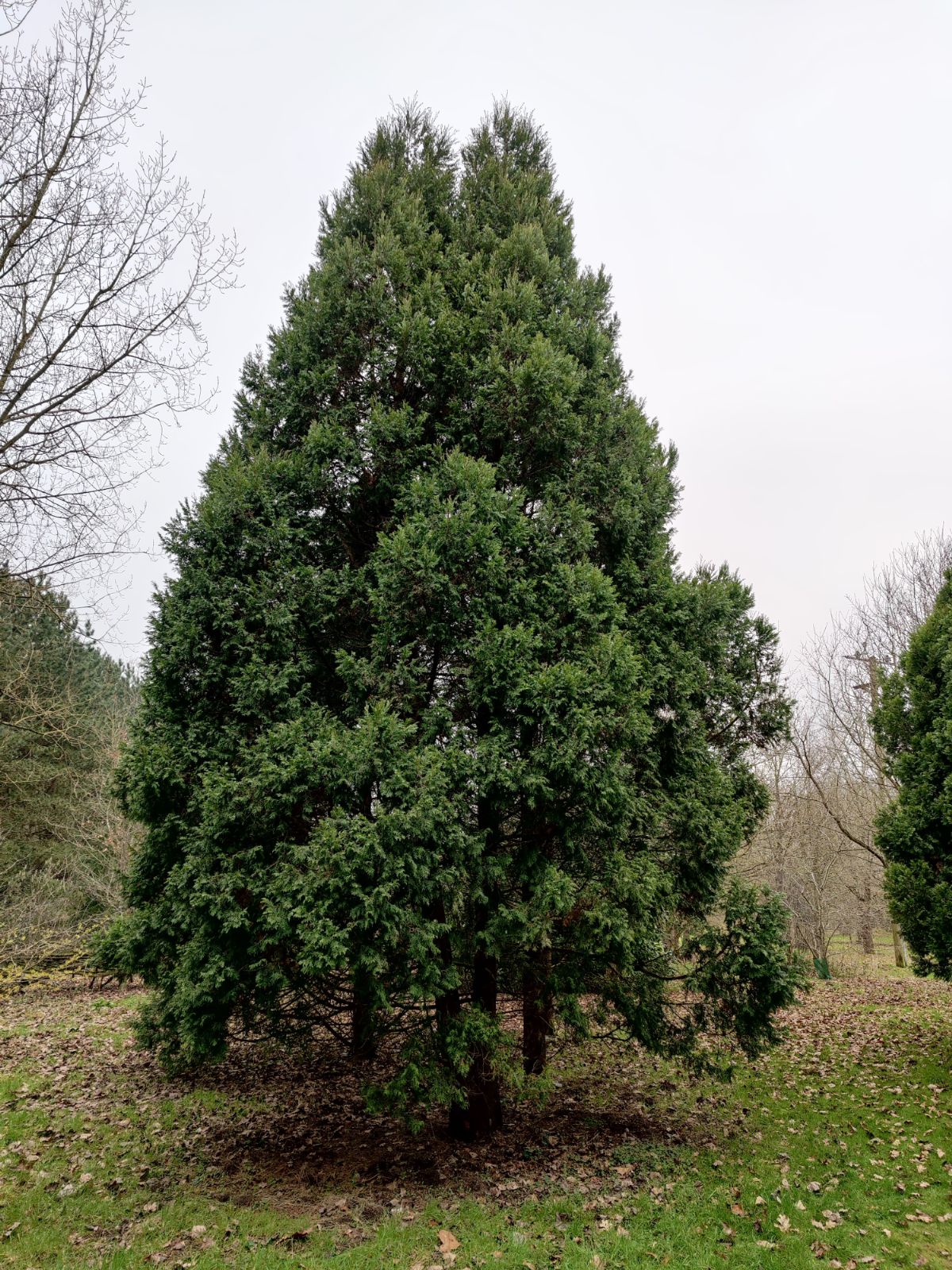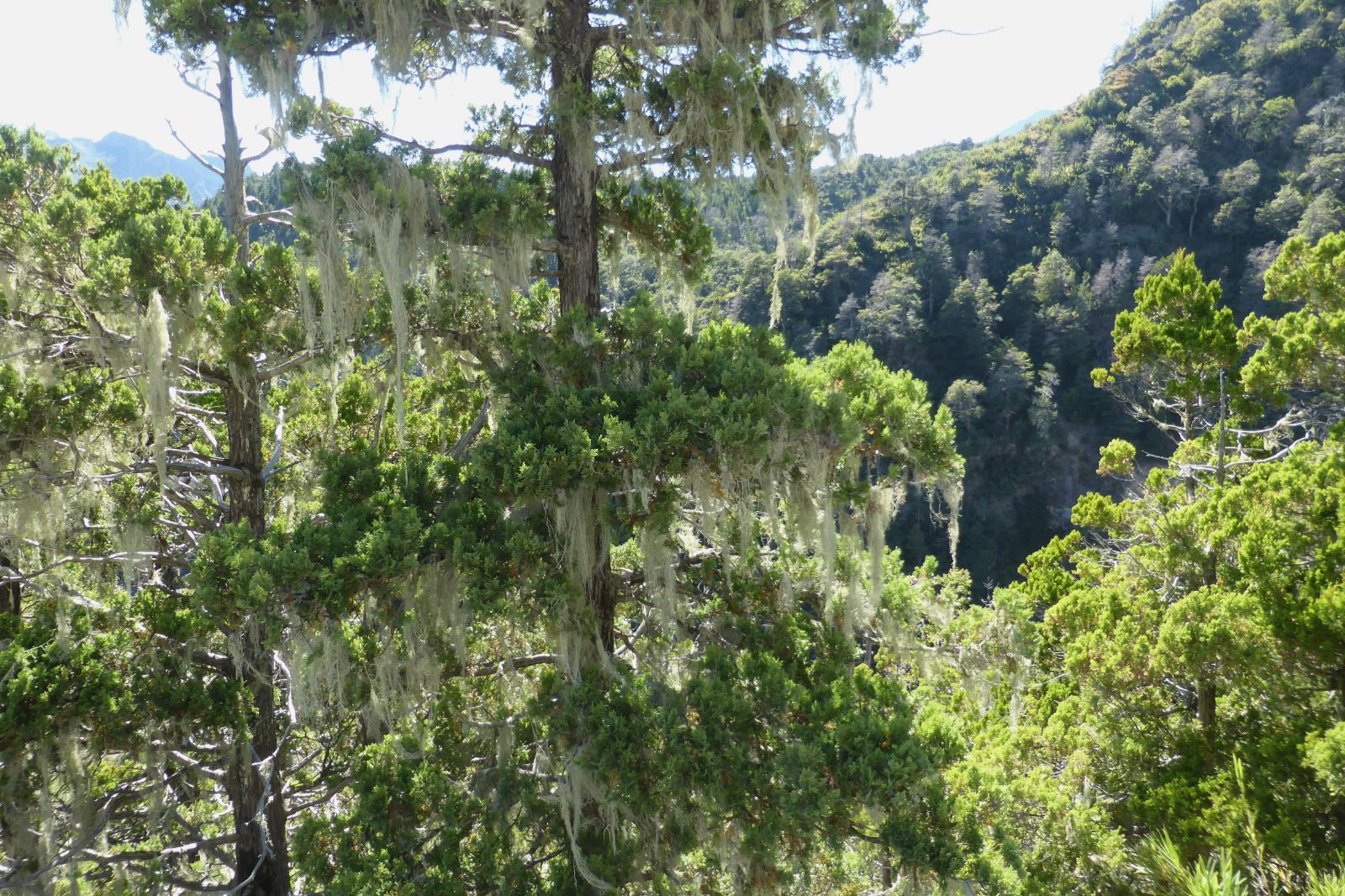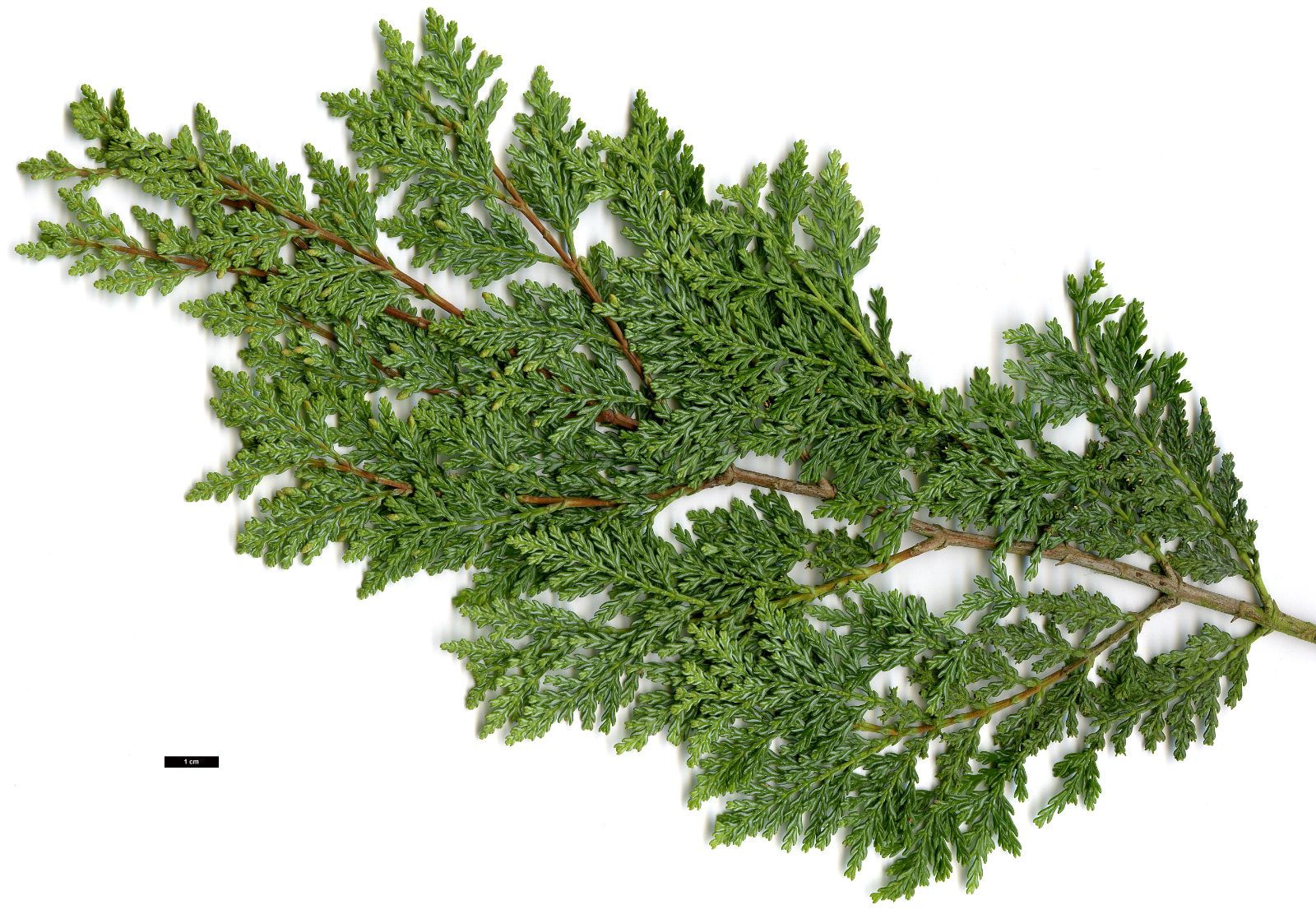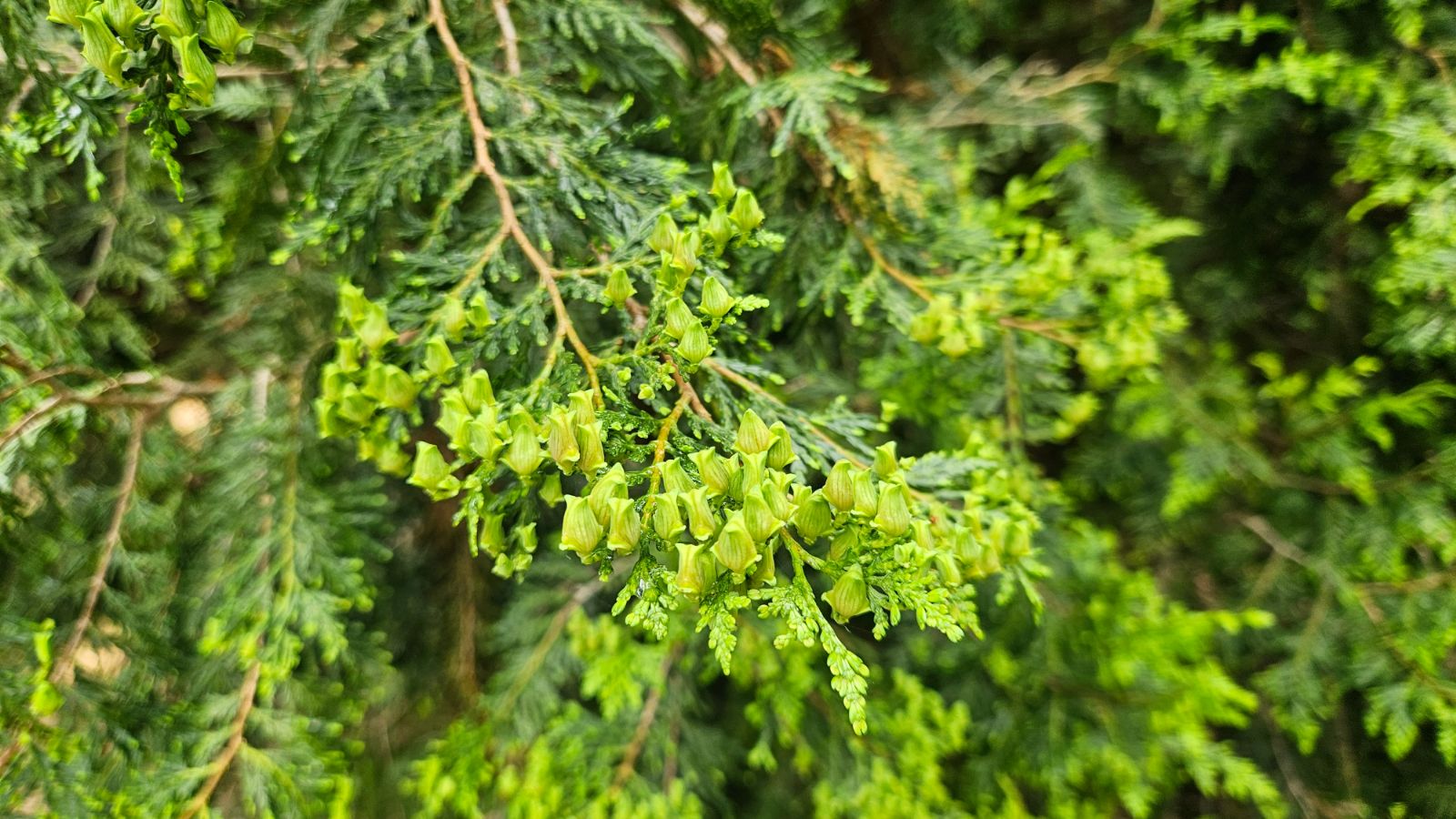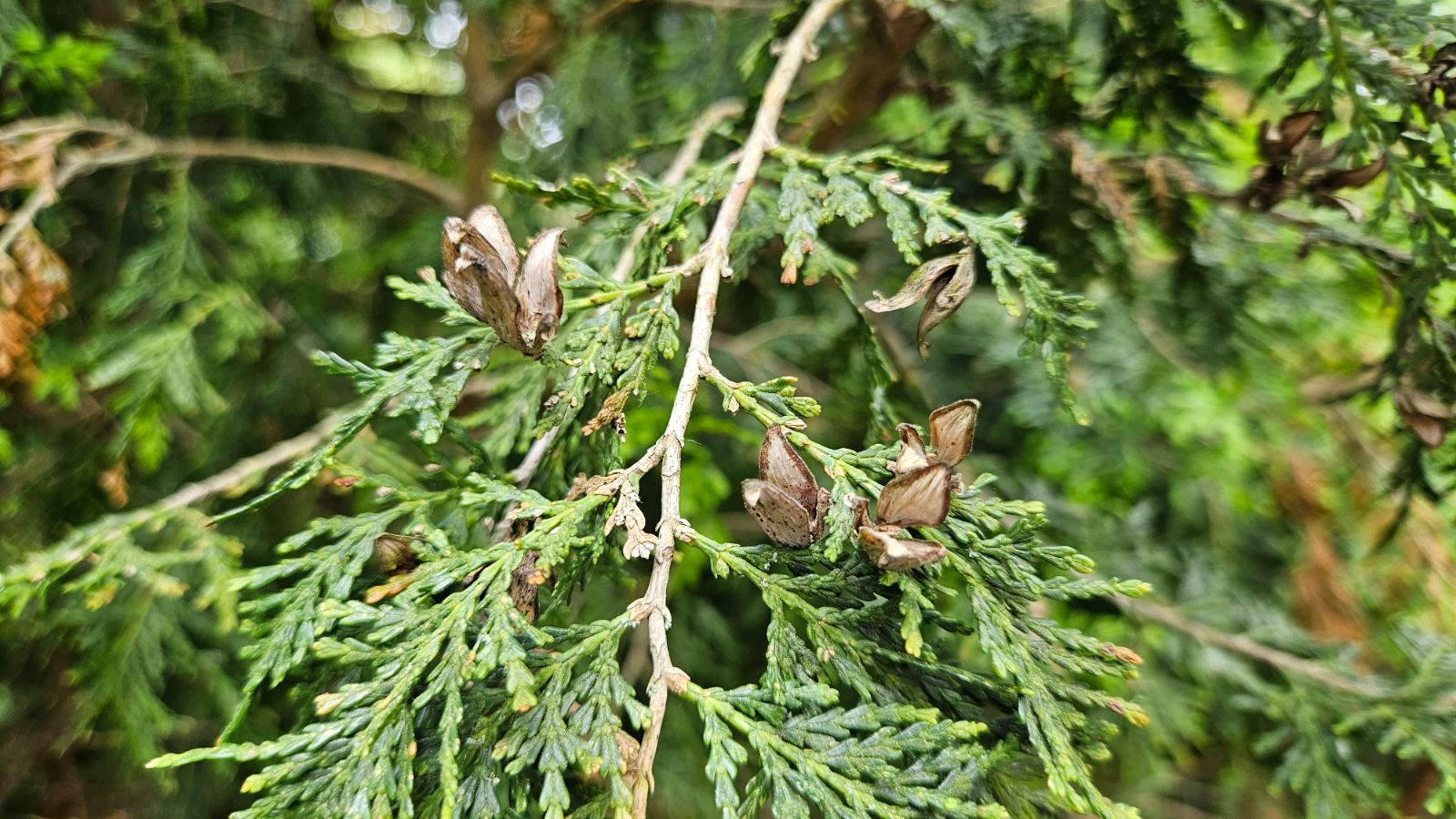Austrocedrus chilensis
Credits
Article from Bean's Trees and Shrubs Hardy in the British Isles
Recommended citation
'Austrocedrus chilensis' from the website Trees and Shrubs Online (treesandshrubsonline.
Other taxa in genus
Editorial Note
Bean discussed this species under Libocedrus chilensis. We present Bean’s unaltered text here under the correct, modern name whilst we await funds to fully update this article. TC, July 2023.
A tree 60 to 80 ft high in nature, at present under 50 ft high in cultivation; bark peeling. Young trees have a pyramidal habit, the branches being much divided and leafy at the ends. Leaves in four ranks, arranged in two opposite, very unequal pairs; the top and bottom ones are very small, the lateral ones 1⁄8 to 3⁄16 in. long, bluntish, dark green on the upper side of the branchlet, with white stomatic bands underneath. Cones with four valvate scales, each with a small boss near the apex. Seeds with two wings, one wing much longer than the other.
Native of Chile and Argentina, with its main development in the transitional zone between the temperate rain forests and the Patagonian steppe; introduced from Chile by T. Bridges, who sent it to Messrs Low, then of Clapton, in 1847. In gardens it is a very pretty small tree, with frondose, laterally spreading sprays, very distinct from the vertical sprays of L. decurrens, from which it differs also in the unequal size and length of the leaves and their whiteness underneath. Comber found a variegated form at St Martin de los Andes in the Argentine, in October 1926.
L. chilensis appears to be quite hardy and grows well though rather slowly in the National Pinetum, Bedgebury, Kent. The largest specimens recorded recently in the British Isles are 36 to 46 ft in height and 2 to 41⁄2 ft in girth (1964–8). There are specimens in this range of size at: Wakehurst Place, Sussex; Nymans, Sussex; The Royal Horticultural Society Garden, Wisley, Surrey; and Mount Usher, Co. Wicklow, Eire. The tree at Whiteways, Devon, mentioned in previous editions, no longer exists; according to the measurement given to Elwes it was 47 ft high and 51⁄2 ft in girth in 1907.
From the Supplement (Vol. V)
specimens: Royal Horticultural Society’s Garden, Wisley, Surrey, 58 × 31⁄2 + 31⁄4 + 23⁄4 ft (1981); Grayswood Hill, Surrey, 40 × 31⁄4 ft (1982); Borde Hill, Sussex, in Gores Wood, 42 × 23⁄4 ft (1981); Westonbirt, Glos., 42 × 21⁄4 ft (1980); Tatton Park, Ches., 42 × 21⁄4 ft (meas. by M. Frankis, 1983); Edinburgh Botanic Garden, 28 × 31⁄4 ft at 1 ft (1981).


